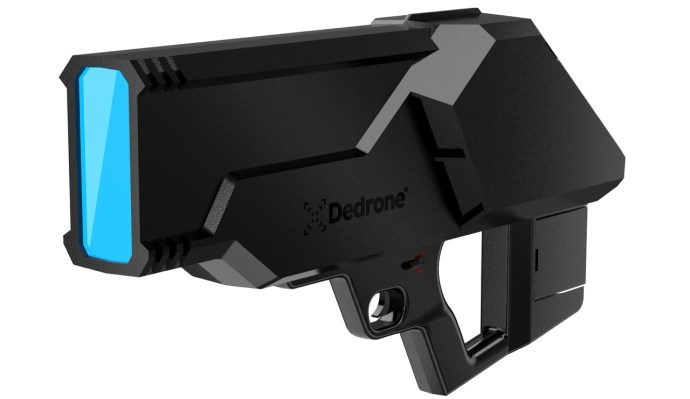Drones are lovely for all sorts of things, including shooting incredible 700-shot gigapixel images over Burning Man, for example. But they can also be used for nefarious purposes, carrying explosives or scaring the bejesus out of the Secret Service as they are trying to protect the prez. Dedrone has had a series of antidrone tools with more than 700 solutions already in the hands of military forces around the world. Today, the company announced it’s adding a handheld system that can jam radio frequencies, effectively preventing drone pilots from controlling their own drones.
Once the connection is severed, what happens next depends on the drone, and how it is programmed to behave after it loses contact with its pilot. Some will just set down wherever they are, others will try to navigate back to the take-off location. It is unclear what would happen if a drone operates autonomously with a programmed path, or potentially some sort of self-flying algorithm taking it toward its target.
The new DedroneDefender is aimed at civilian, state and local law enforcement in urban environments. Weighing in at 7.5 pounds and 22 inches long, it uses narrow-band (or “comb”) jamming to ensure as little interference with other devices as possible. Once communications are interrupted on a drone, the tool enters a preprogrammed safety mode to minimize risk to others and damage to the drone, the company claims.
“DroneDefender is a valuable resource for extreme hostile environments, as proven by our federal and military customers,” said Aaditya Devarakonda, CEO of Dedrone. “DedroneDefender extends that security to law enforcement and is a vital tool in a layered defense approach. It is easy to implement and use for drone mitigation, especially when combined with the threat prioritization provided by DedroneTracker. Our solution library is continuously updated to ensure both DroneDefender and DedroneDefender are able to mitigate even the newest manufactured and DIY drones.”
You won’t be able to buy them yourself, though. For one thing, US law prohibits disabling of aircraft; DoD or Homeland Security may be authorized to disable a drone they identify as a terrorist threat (let’s say at the Super Bowl) but local police or stadium security cannot legally bring the drone down under current law. Unless you have very deep pockets and some pretty special authorizations, you’re out of luck. DedroneDefender price range is in the tens of thousands of dollars.
